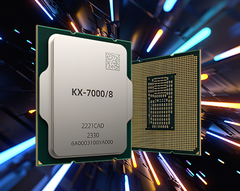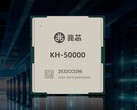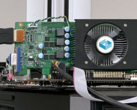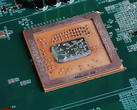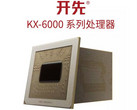In early 2022, Intel was showing wariness regarding the rapid developments happening with the China-based CPU makers. The trade wars between China and US hugely accelerated the CPU progress on the Chinese side, and Intel estimated that companies like Zhaoxin and Loongson could quickly evolve and threaten Team Blue’s position in the next 3-5 years. This estimation seemed a bit far-fetched at the time, considering that the performance of China’s previous gen desktop CPUs was barely catching up with i5 processors from 2017. Nevertheless, if the US is not playing fair, why shouldn’t China do the same. Instead of building X86 architectures from scratch, some Chinese CPU makers now seem to nonchalantly rebadge and redesign existing Intel or AMD models. This is particularly apparent with Zhaoxin’s latest KX-7000 desktop CPUs that resemble Intel’s Alder Lake and Raptor Lake models.
Apart from the physical likeness, including the same lid shape and exact same socket dimensions from Intel’s LGA-1700, the new KX-7000 CPUs from Zhaoxin feature a “Century Avenue” X86 architecture with 8 cores with no hyperthreading, suggesting that they could be redesigned versions of the Intel N300 processors. Still, there are quite a few additions to go well with a higher-end desktop platform.
The cache size, for one, is considerably larger, as the KX-7000 gets 4 MB L2 and 32 MB L3 caches. It has not yet been confirmed, but these processors are probably built on 7 nm nodes. There is a slower variant clocked at 3.0 GHz base and 3.6 GHz boost, as well as a faster one running at 3.2 GHz base and 3.7 GHz boost. It even supports up to 128 GB of DDR5-48000 and DDR4-3200 RAM, but it is limited to 24 PCIe 4.0 lanes. Connectivity support includes 2x USB4, 4x USB-A 3.2 Gen 2, 2x USB 2.0 and up to 3x SATA III for storage.
Unlike previous Zhaoxin desktop-grade processors, the new KX-7000 series comes with the company’s first iGPU known as C1190 that features support for DX12, OpenCL 1.2 and OpenGL 4.6 instructions, along with H.265 HEVC and H.264 decoding.
No actual performance metrics have been provided by Zhaoxin, and it looks like there are no desktops integrating these new CPUs. Since they seem derived from Intel’s Alder Lake / Raptor Lake architecture, we could expect 2021/2022 i5 levels of performance. Driver support, however, is an entirely different matter that still proves to be challenging for Chinese makers.
Source(s)
Zhaoxin
via Videocardz / HKEPC




